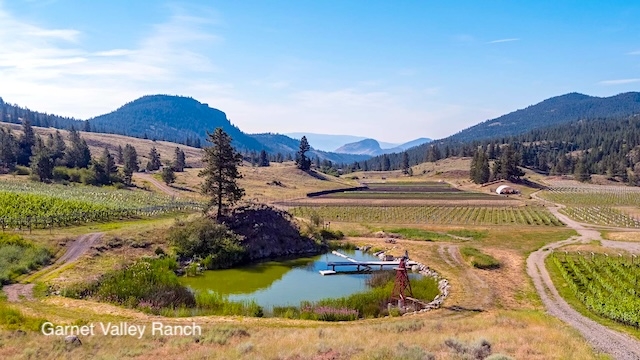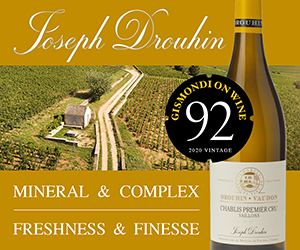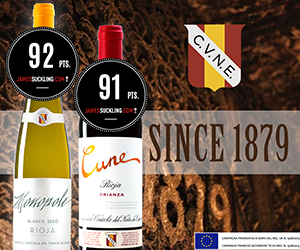The latest region in our ongoing series on British Columbian pinot noir, is Summerland, which was awarded three sub-GIs.
We have so far covered Summerland Lakefront, Summerland Bench, and today we focus on Summerland Valleys.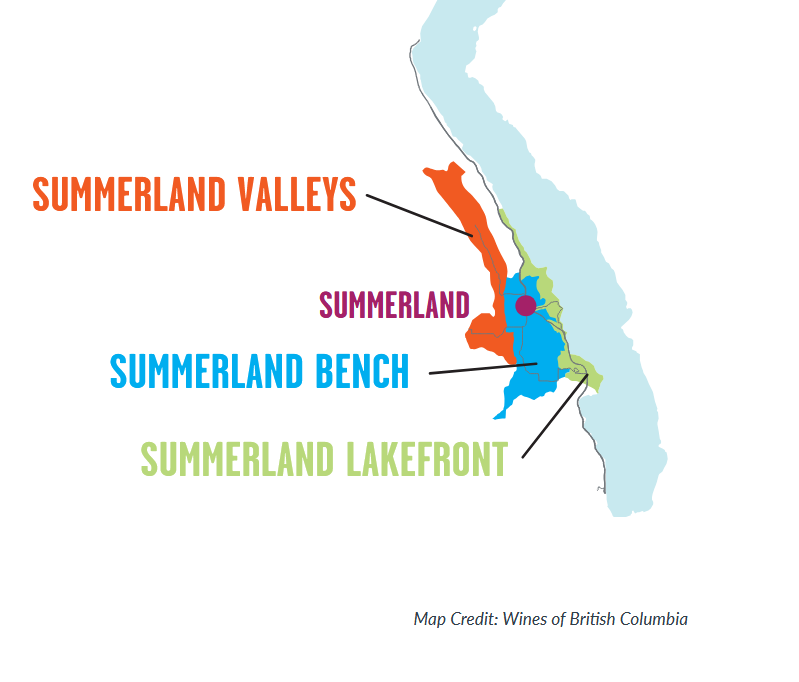
Summerland Valleys sub-GI
The area is a long finger of about 1,350 hectares that begins west of the town of Summerland and runs north, paralleling Lake Okanagan. It includes parts of Prairie Valley and Garnet Valley, with higher elevations and cooler climates than other parts of Summerland. Of the approximately 55 hectares under vine, either planted or in production, roughly two-thirds are located in the Garnet Valley and one-third in Prairie Valley.
Elevations range from 500 to 700 metres, and it has some of the highest vineyards in the Okanagan. Other factors in this region include slope angle and the presence of bedrock outcrops.
The wineries here include Solvero Wines, Garnet Valley Ranch Winery, Summergate Winery and Pamplemousse Jus.
Complex Soils
As in most of the Okanagan Valley, the surface geology of the GI is very complex. In Summerland Valleys, the most important forces forming the geology and soils of the area proceed from the glacial period that occurred approximately 10,000 years ago. The glaciers sculpted existing landforms and their eventual melting laid down a variety of alluvial deposits. These, along with wind-blown fine sands, glacial till, silt deposits and decomposed organic materials created the parent materials for an array of often stratified soil types which can occur in close proximity within the sub-GI.
Climate
This sub-GI has fewer growing degree days and a shorter frost-free period than the other Summerland sub-GIs. Altitude and airflow contribute to make this a very cool climate area. There is some slight variation in climate between the two valleys with the eastern side of Prairie Valley being more open to the warming airflow influence of Lake Okanagan. The cool climate factors allow for sparkling wine production as well as providing the potential to produce ice wine on the sub-GI’s lower slopes. But recent trends to generally warmer winters and shoulder seasons may eventually contribute to a wider range of viticultural possibilities.
Overall, the variations in elevation, air drainage, slope position, and slope direction set up an array of site conditions best suited to growing white wine grapes along with cool climate loving pinot noir—the most planted variety. Given pinot noir’s versatility, winemakers can choose to make sparkling, rosé, white, or red wine from it depending on the ripeness achieved in the vintage.
Geographical Features
This sub-GI encompasses two distinct geographical features of the Summerland area, Prairie valley and Garnet Valley. Both valleys begin at the western edge of the town of Summerland. The southern portion, the roughly triangular Prairie Valley, shares a boundary with the Summerland Benches sub-GI to the east of it.

The long, narrow Garnet Valley begins where a ridge rises in the agriculturally green northwest corner of Summerland. It then stretches north running parallel to Lake Okanagan but is separated by a mountain ridge that continues up towards Peachland. The two valleys are linked by land along the base of Cartwright Mountain.
Prairie Valley
Prairie Valley is a mainly agricultural area containing both vineyards and orchards. Vineyards cover a relatively small area of about 20 hectares, and vineyard expansion is limited to some degree due to the peaty nature of the soils which include decomposed organic matter. This tends to make the soils less free-draining and, therefore, less suited for vineyards than other parts of the sub-GI.
Garnet Valley – An Even Cooler Climate
The Garnet Valley part of the sub-GI extends from just south of the Garnet Lake dam in the north to the lower slopes of Conkle Mountain in the south. In places, this agricultural valley can be steeply tilted, undulating, or forested and grows narrower at the northern end. The steepness of the hillsides, slope direction, elevation range, and the shade provided by the embracing mountain ridges makes the Garnet Valley a hospitable, varied, and interesting terrain for pinot noir and is already the source of some very interesting B.C. wines that show great promise.
The climate in this part of the Summerland Valleys is distinctly cooler than the main vineyard area of the Summerland Bench sub-GI despite them being only five kilometres from each other and a similar two-kilometre distance from Lake Okanagan.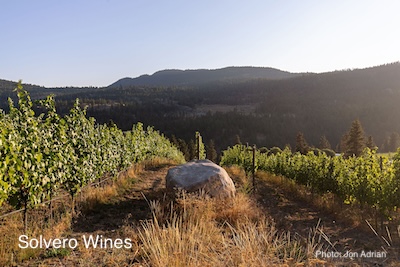
The upper reach of Garnet Valley has about 200 fewer growing degree days than Summerland Bench (approx. 1100 vs. 1300) and the frost-free period is 40 days shorter (e.g., in 2019, 154 vs. 197). The climatic difference between Garnet Valley and Summerland Bench is about the same as the difference between Summerland Bench and Osoyoos.
The much cooler temperatures are largely the result of elevation difference and landscape position, with the latter related not only to the mountain ridge isolating the valley from the warming influence of the lake but also to the valley floor, which is subject to cool nighttime air flows that depress daily mean temperatures and shorten the frost-free period.
The unique Garnet Valley climate exists in what is already a cool climate area and clearly affects grape ripening potential but many of the world’s most interesting wines come from very cool climate areas.
The advantage of the cool growing season and diurnal range in the valley is that the wines retain natural, vibrant acidity and fruit aromatics. This also makes the sub-GI well suited to viticulture for sparkling wine production. Vineyard sites on frost-prone lower slopes and the valley floor can also be used to produce ice wine.
There are currently just four wineries in the Summerland Valleys sub-GI, two in Prairie Valley (Pamplemousse Jus and SummerGate Winery) and two in Garnet Valley (Garnet Valley Ranch and Solvero Wines).
From the pinot noir perspective, in my opinion, the two most noteworthy pinot noir-producing wineries in this sub-GI are those in the Garnet Valley.
Solvero
It was in the Garnet Valley that the Sartor family, Andrea and Bob Sartor and their son Matt, dreamed that vineyards could flourish. Fittingly, the initial conversation was over a glass of pinot noir. In 2014, they acquired thirty acres of land 20 minutes north of Summerland that was a steep, forested mountainside. It took two years to clear the land and prepare it for planting. This 2019 pinot noir is the inaugural vintage.
The success of the initial wines also rests with their experienced and talented winemaker, Alison Moyes. Her winemaking resume in the Okanagan Valley includes five vintages at Stoneboat Vineyards and six vintages at Liquidity. Having tasted the wines from both vineyards during her stints there, it is notable how consistently she expressed the very different pinot noir terroirs through a range of vintages at those two properties.
Garnet Valley Ranch
This winery is a project of Haywire Winery (formerly Okanagan Crush Pad) and is located in the northern end of Garnet Valley, though it is still just about a 10-minute drive from downtown Summerland. The first blocks were planted in 2014, and there are currently 18 hectares under vine, all certified organic, with a variety of grapes including pinot noir.
The individual block sites were selected and designed by the Chilean terroir consultant Pedro Parra. The vineyard blocks are located between 600 and 680 metres above sea level, making this the highest elevated vineyard site in the Okanagan Valley. Their first pinot noir was released in 2017.

 quicksearch
quicksearch

